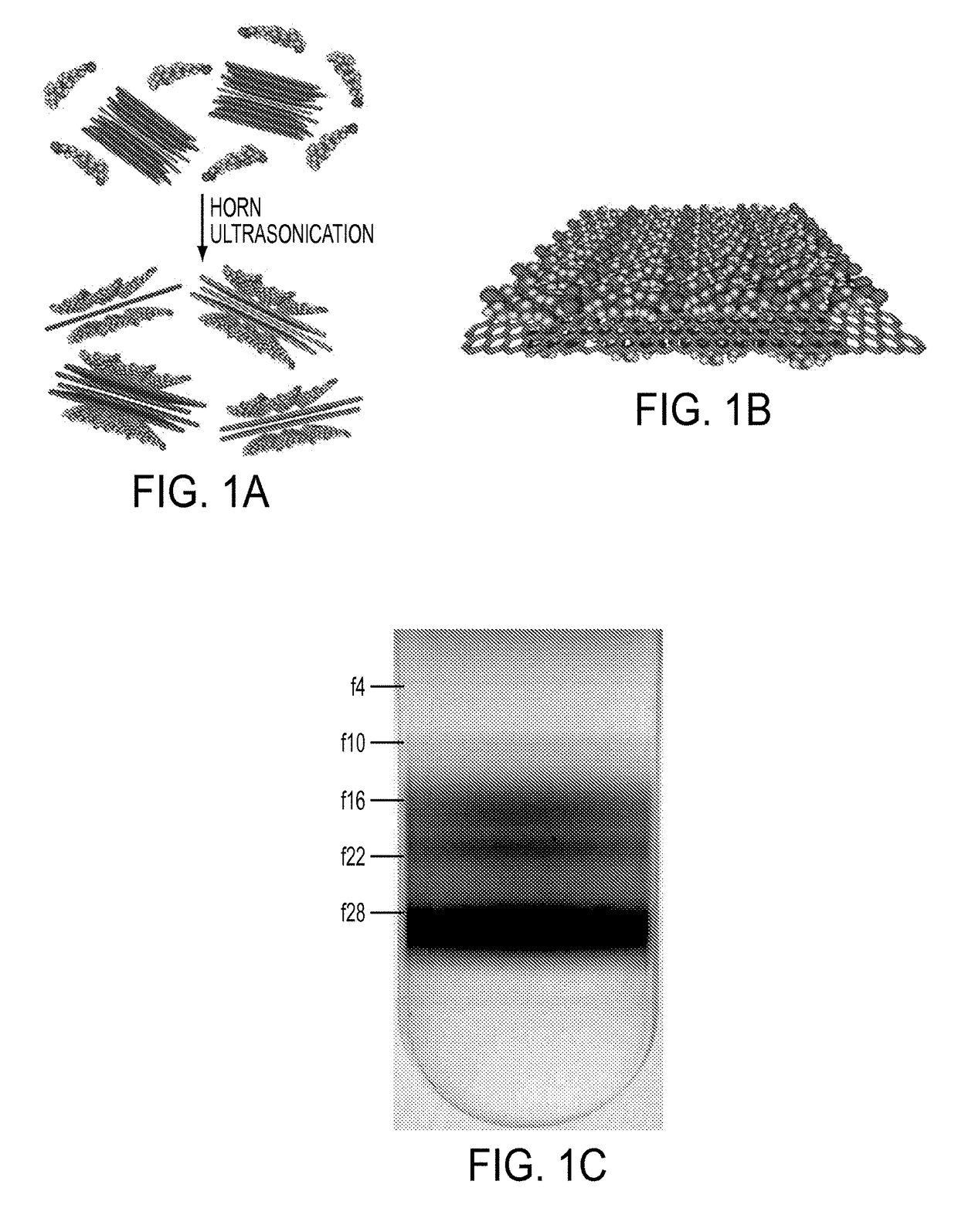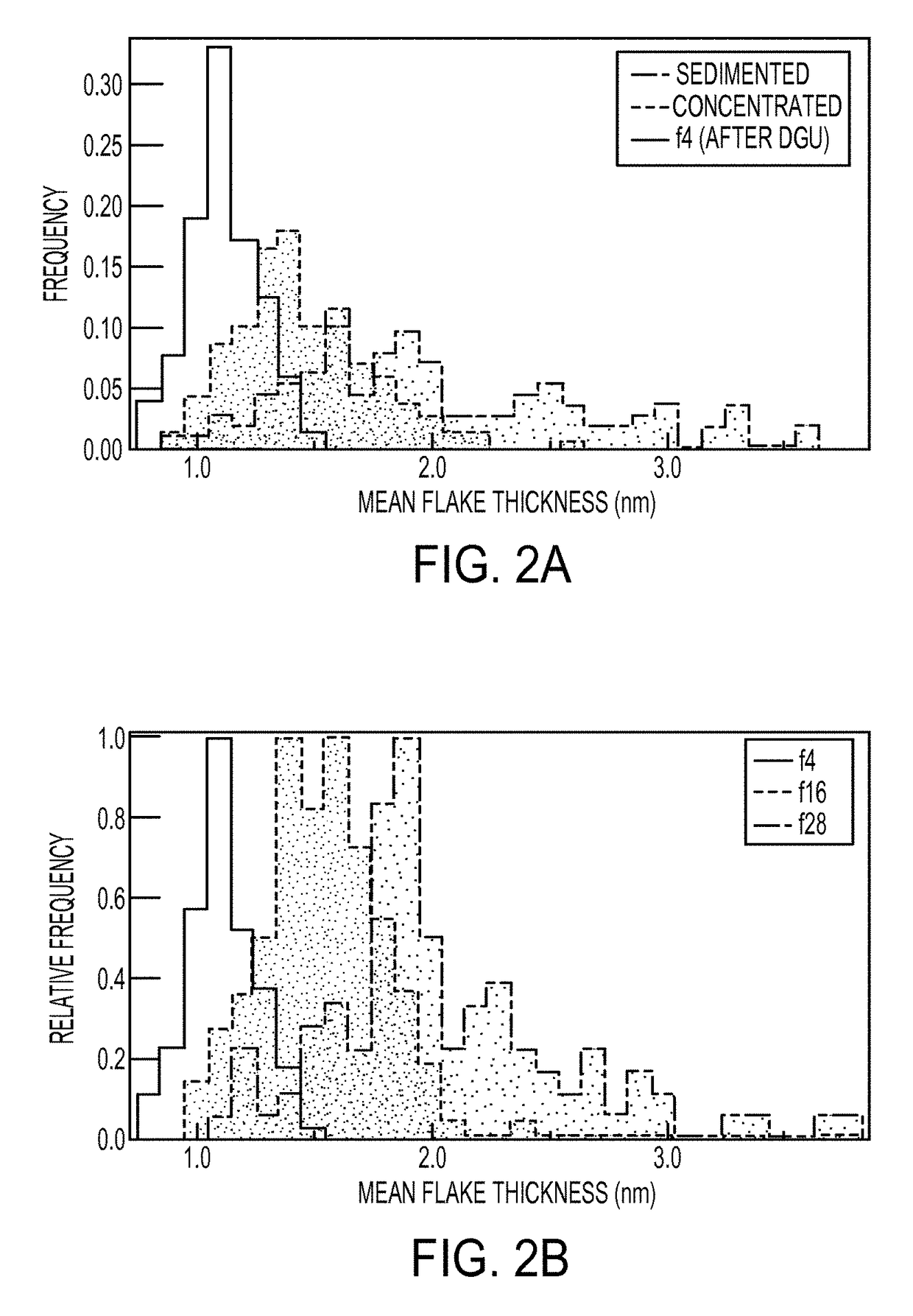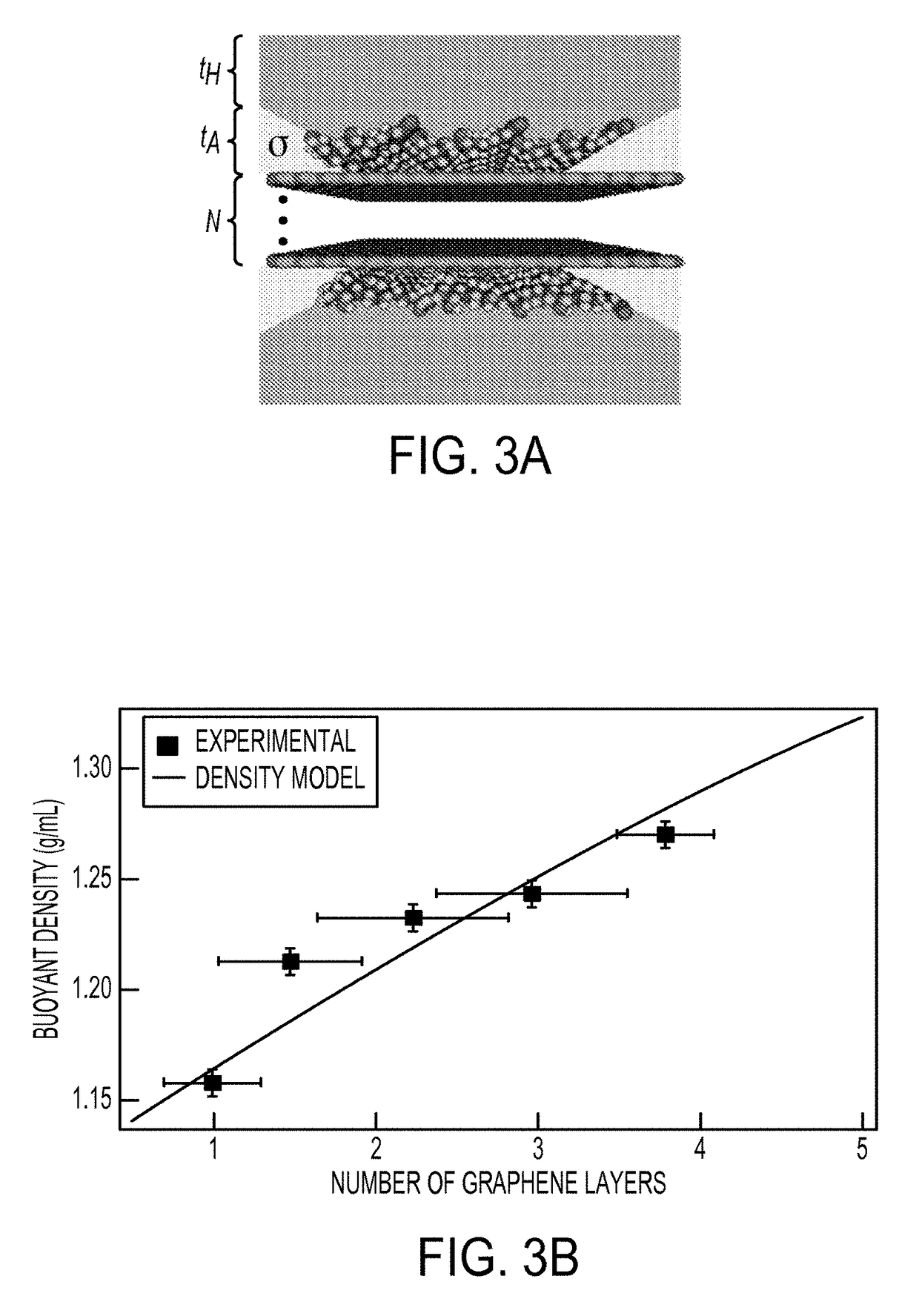Sorting two-dimensional nanomaterials by thickness
a two-dimensional nanomaterial and nano-material technology, applied in the direction of graphene nanoribbons, single-layer graphene, centrifugal force sediment separation, etc., can solve the problems of difficult position control, inability to provide thickness control, and considerable location effort, so as to improve separation quality, improve separation quality, and improve separation fractions. enriched
- Summary
- Abstract
- Description
- Claims
- Application Information
AI Technical Summary
Benefits of technology
Problems solved by technology
Method used
Image
Examples
example 1
Solution Phase Preparation of Graphene
[0113]Graphene nanomaterial dispersions were prepared by horn ultrasonication of naturally occurring graphite flakes in an aqueous solution containing a surface active component. More specifically, six grams of natural graphite flakes (3061 grade material from Asbury Graphite Mills, Asbury, N.J., USA) were added to 70 mL of a 2% w / v sodium cholate (SC) aqueous solution inside a ˜120 mL stainless steel beaker. This mixture was chilled in an ice water bath and ultrasonicated using a Fisher Scientific Model 500 Sonic Dismembrator with a 13-mm-diameter tip for one hour at a power level of 51-52 W. Large initial loadings of graphite were chosen to maximize the concentrations of graphene exfoliated into the SC solution given the low cost of graphite flakes (˜$0.02 per gram). The sonicated graphene nanomaterial dispersions appeared as a gray-black slurry, suggesting the presence of both thin graphene nanosheets and thicker graphite flakes.
example 2
[0114]Sedimentation centrifugation was performed to remove the fast sedimenting thick graphite materials from the sonicated graphene nanomaterial dispersions from Example 1. Specifically, the graphene nanomaterial dispersions were centrifuged in filled 2 mL eppendorf tubes using a tabletop centrifuge (Eppendorf Model 5424 Microcentrifuge) using four different conditions summarized in Table 1. The black supernatant resulting from the sedimentation centrifugation processing was believed to consist of predominantly few-layer graphene nanoflakes. The sedimented graphene nanomaterial dispersions were observed to be stable for several weeks at loadings in excess of 90 μg / mL. After centrifugation, the top 1 mL layer of the dispersion was decanted carefully from each eppendorf tube. Optical absorbance measurements were taken with a Cary 500 spectrophotometer (Varian) to estimate the concentration of graphene nanomaterials in the dispersions using an average absor...
example 3
Concentration of Graphene Dispersions by Ultracentrifugation in a Step Gradient
[0116]To obtain concentrated dispersions of graphene nanoflakes, the sedimented dispersions from Example 2 were centrifuged in a step density gradient. Specifically, the step gradients were prepared from a dense 6 mL underlayer containing about 60% w / v iodixanol (density of about 1.32 g mL−1) and about 2% w / v SC, followed by a graphene overlayer of ˜32 mL (density of about 1.0 g mL−1) added carefully on top, and ultracentrifuged in an SW 28 rotor (Beckman Coulter) for 24 hours at 28 krpm and a temperature of 22° C. Ultracentrifugation of the step gradients caused the graphene nanosheets to sediment rapidly to the point where the density of the medium changed discontinuously. In this region, the few-layer graphene nanoflakes with low buoyant densities halted their sedimentation as they reached their isopycnic points while the denser thick graphite flakes continued their motion until they eventually form a ...
PUM
| Property | Measurement | Unit |
|---|---|---|
| mean thickness | aaaaa | aaaaa |
| mean thickness | aaaaa | aaaaa |
| mean thickness | aaaaa | aaaaa |
Abstract
Description
Claims
Application Information
 Login to View More
Login to View More - R&D
- Intellectual Property
- Life Sciences
- Materials
- Tech Scout
- Unparalleled Data Quality
- Higher Quality Content
- 60% Fewer Hallucinations
Browse by: Latest US Patents, China's latest patents, Technical Efficacy Thesaurus, Application Domain, Technology Topic, Popular Technical Reports.
© 2025 PatSnap. All rights reserved.Legal|Privacy policy|Modern Slavery Act Transparency Statement|Sitemap|About US| Contact US: help@patsnap.com



